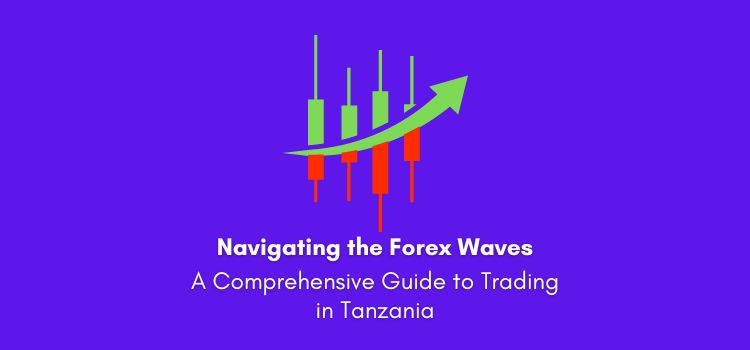Foreign exchange trading is becoming an increasingly popular choice among individuals interested in diversifying their exposure to global markets and maybe earning from fluctuations in the value of currencies.

In Tanzania, where the economic climate is in a state of perpetual flux, it may be exciting and demanding to acquire the knowledge necessary to successfully manage the waves of foreign exchange.
The principles of foreign currency trading should be made more accessible to inexperienced traders, and those interested in developing their trading talents should be provided with valuable insights.
Beginning the Process: Creating an Account for Your Participation in the Foreign Exchange Market
▶ Utilizing a Reliable Broker from the Beginning of the Process
Before joining Forex Trading Tanzania, one of the most critical steps to take is to choose a broker who can be trusted.
It is recommended that you opt for one that is regulated, has educational materials, and has a platform that is simple to operate.
Because of this, you can be certain that your trading journey will take place in a secure and encouraging environment.
▶ Verification and Account Registration
Following selecting a broker to collaborate with, the further actions are registering your trading account and verifying its authenticity.
In most instances, this necessitates the presentation of many pieces of personal information in addition to photographic identification.
If you complete this step as fast as possible, you can start trading without any unnecessary further delays.
Acquiring Information Regarding Currency Pairs: The Basis of Foreign Exchange Trading
▶ Major, Minor, and Exotic Pairs to Consider
Foreign exchange trading involves the trading of currencies in pairs. The United States Dollar (USD), the Euro (EUR), and the Japanese Yen (JPY) are examples of significant pairings, which include the currencies that are traded the most often.
Unlike exotic pairings, which comprise one primary currency and one from a developing country, minor pairs consist of currencies from economies that are not as large as the main ones.
▶ Reading Quotes for Local Currency
A crucial requirement is an understanding of currency quotations. It is important to note that the base currency is always the first currency, while the quote currency is the second.
Using the exchange rate, you can determine the amount of the quoted currency that must be spent to acquire one unit of the base currency.
Tools for Making Informed Trading Decisions: Fundamental Analysis and Technical Analysis
▶ Fundamentals Examination
Currency movements may be forecast using basic analysis, which involves examining economic data, interest rates, and geopolitical events all at once.
Economic calendars and news that may impact the currencies you trade should be kept in mind at all times.
▶ Technical Evaluation
In technical analysis, charts and historical price data are used to identify patterns and potential entry or exit points.
Even if it appears hard, using basic technical indicators like as moving averages and trendlines may substantially aid your decision-making process.
Risk Management: Keeping Your Financial Resources Safe
▶ Setting up Take-Profit and Stop-Loss Directions
Take-profit orders, which are used to protect profits, and stop-loss orders, which are used to limit prospective losses, are both essential components of risk management. Stop-loss orders are used to limit future losses.
By doing so, you not only improve your ability to maintain a disciplined attitude, but you also avoid your emotions from impacting the decisions you make about trading.
▶ Increase in Position Size and Diversification of Offerings
Ensure that you do not put all of your eggs in one basket for the sake of convenience. It is possible to reduce the risk associated with your trades by spreading your transactions among a number of different currency pairs.
Additionally, while selecting the right position size for each trade, it is important to take into consideration the size of your account as well as the level of risk that you are ready to tolerate.
Develop a Trading Strategy
▶ Finding Out What Your Business Objectives Are
Clearly and accurately defining your financial objectives is the first step you should take before beginning to invest. Your trading selections will be guided by your clear vision, regardless of whether you want to earn money in the near term or save money in the long term.
▶ Developing a Routine
Trading foreign currencies requires a high degree of consistency on the part of the trader. It is critical to establish a routine that includes market research, trading hours, and periodic reviews of your trades.
Conclusion
To effectively navigate the waves that exist in Tanzania’s foreign currency market, knowledge, strategy, and discipline are required.
Learn the basics, choose a reputable broker, do extensive research, create a solid trading strategy, and practice risk management.
You will be able to efficiently surf the waves of the foreign currency market if you accomplish all of these things.